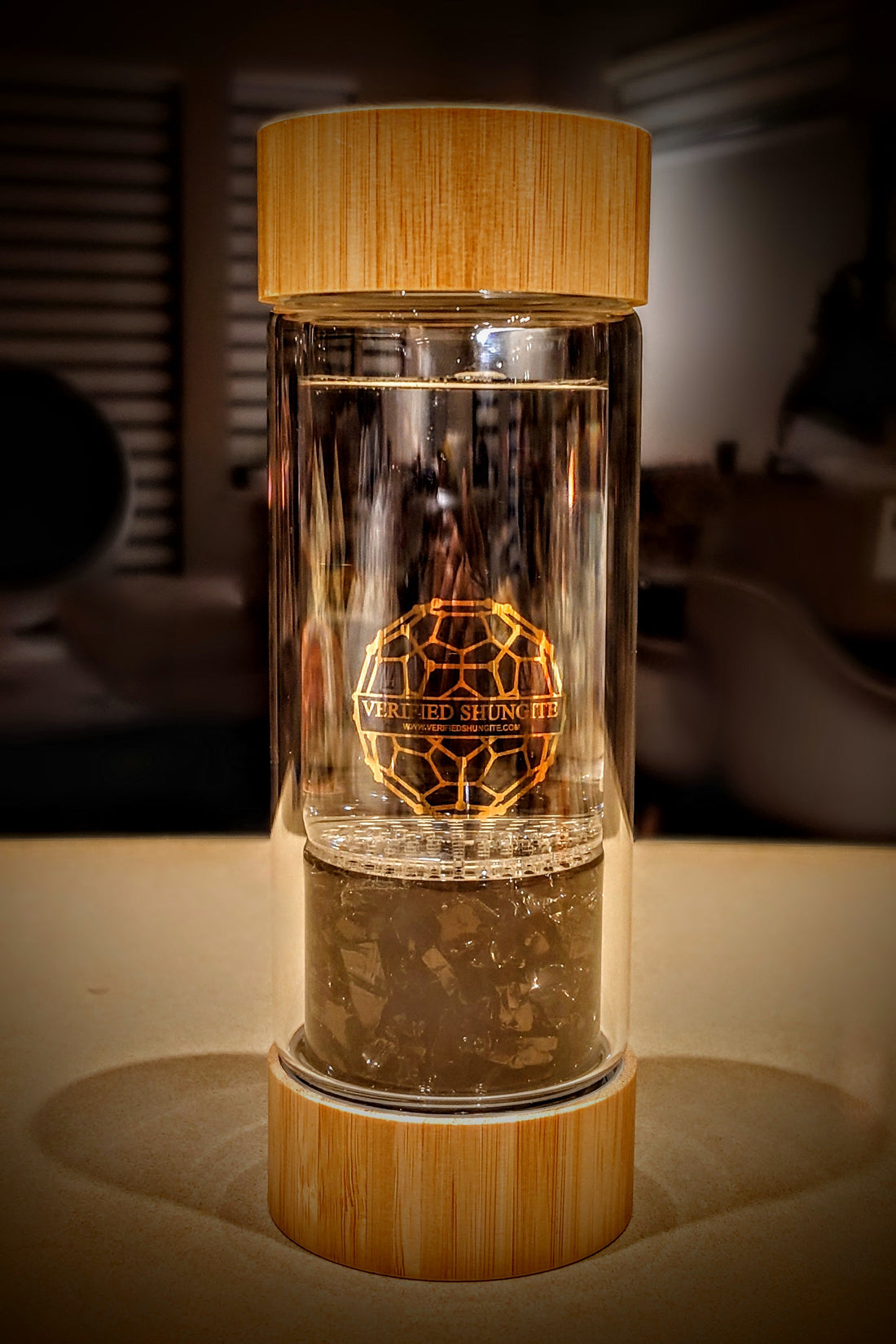
Water Purification With Shungite
Share
Shungite Water: History, ORP Tests, and How I Use It Daily
Can a billion-year-old carbon stone actually change the water you drink? I wanted to know—so I measured it. Below is the origin story, how I use it, what to avoid, and the ORP (Oxidation-Reduction Potential) tests I ran at home that you can easily repeat.
How I first learned about Shungite
Shungite was first discovered by inhabitants of the village of Shunga near Lake Onega in Karelia, Russia. The story goes that copper miners fell ill from a gas in the mine—but recovered after drinking from the lake.
Russia’s Peter the Great visited, founded a wellness spa there, and even directed soldiers to bathe in the lake before battle. A run of improbable victories followed, often credited to the vitality from those waters.
The Tsarist Army began carrying Shungite stones to purify water in the field—crucial when boiling wasn’t an option.
How I use Shungite water
- In my plant pots (they love it)
- In my cat’s water bowl
- In my daily drinking water
- Large elite stones in my bathtub to gently counter-spin the water
I get the most profound effects when I drink it on an empty stomach: before bed, if I wake up overnight (great for sleep and reflux), and first thing in the morning. If your stomach’s full—say, with cookies—you’ll blunt the effect.
Safety notes you should know
- Don’t ingest black fullerene powder. Unless it’s truly nano-sized (≈7–9 nm), larger particles can burden the liver.
- Don’t boil Shungite stones. Heating can generate singlet oxygen—not what we want for health or safety.
ORP: What it is and why I measure it
ORP (Oxidation-Reduction Potential) is measured in millivolts (mV). Positive ORP means a liquid is oxidizing (it steals electrons). Lower or negative ORP means a liquid has reducing/antioxidant potential (it can donate electrons).
- Most tap/bottled waters measure high and positive (sometimes up to +600 mV).
- Shungite-infused water consistently shifts lower—indicating real antioxidant potential.
My at-home ORP test (step-by-step + videos)
You can replicate this easily. I used an ORP meter and two jars of the same distilled water.
- Two identical glass jars
- Fill both with the same distilled water
- Add elite/noble Shungite stones to one jar
- Leave the other as a control
- Rinse the ORP meter with clean distilled water between readings
- Use a digital ORP meter (e.g., EZ-9910)

Results after 30 minutes:
- Control: +410 mV
- Shungite water: +334 mV
That’s a 76 mV drop—no electricity, no tablets. Just carbon and time.
From +410 mV down to +334 mV in ~15 minutes. Chemistry you can see.
Why I don’t recommend hydrogen water
Hydrogen water gets hyped with ORP claims like −700 mV. That level of reduction doesn’t occur in nature—no spring, no glacier, no meltwater reads like that.
Your body also needs some oxidation (immune defense, metabolism, adaptation). Over-suppressing oxidation isn’t a goal. The devices are pricey, rely on synthetic electrolysis, and we don’t have long-term peer-reviewed data showing daily use is beneficial.
Heavy metals? What the 2021 study actually found
A 2021 study reported that Type 3 Shungite could leach metals into water (nickel, copper, lead, cadmium, zinc, chromium, arsenic). That raised good questions.
My stones are independently certified to contain none of those contaminants in use. Every batch is tested. Click here to see the certifications and details.
How to make Shungite water
- Rinse stones well (remove dust/residue).
- Place in glass or ceramic—avoid plastic.
- Fill with clean drinking water.
- Let it infuse 6–8 hours (overnight is ideal).
- Refresh stones periodically (rinse; let them sun-dry to “reset”).
My custom Shungite water bottle
I designed a bottle that makes daily use simple and safe.
FAQ: How often should I replace or recharge stones?
I rinse weekly, sun-dry monthly, and replace when stones visibly degrade or after extended heavy use.
FAQ: Can I use tap water?
Yes—Shungite helps reduce ORP regardless, but I prefer filtered or distilled for cleaner baselines and testing.
Scientific references
- Shirahata et al., 1997 — Electrolyzed-reduced water scavenges ROS and protects DNA.
- Ohsawa et al., 2007 — Molecular hydrogen as a selective antioxidant.
- Lee et al., 2013 — Hydrogen-rich water and oxidative stress in hepatitis B.
- Bityukov et al., 2004 — Shungite and EMF protection.
- Karpukhin et al., 2002 — Structural/biological characteristics of Shungite carbon.
This content reflects my personal experience and testing. It is not medical advice. If you have a medical condition, consult your clinician before making changes to your water or routine.




